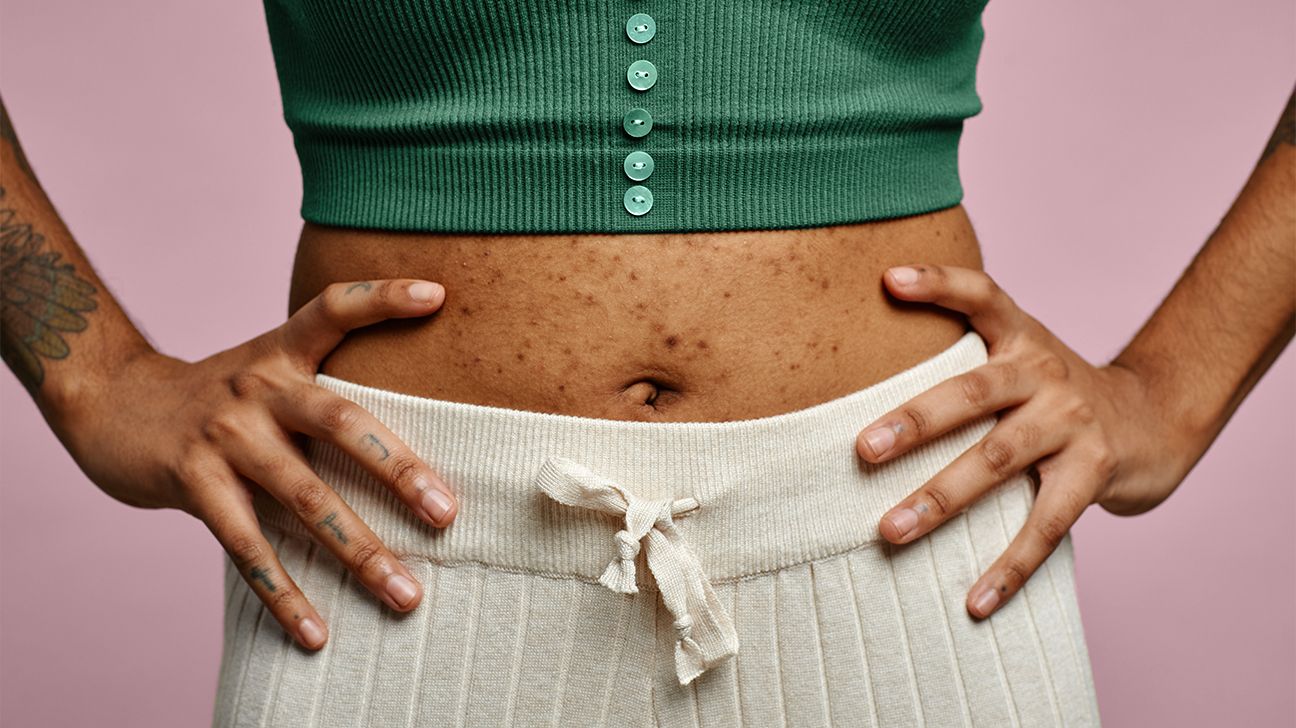Poor hygiene can lead to an unpleasant belly button odor. However, redness or swelling could indicate a more serious issue.
Ever had an odor down there? Well, we’re actually talking about a different “down there.” Turns out your belly button can harbor some unpleasant aromas. Time to solve the mystery of your slightly smelly belly button so you can be a happier, fresher you.

The most common cause of a smelly belly button is that, much like a dorm room, it hasn’t been properly cleaned in a while. But an odd smell from your belly button could be a sign of a more serious condition that needs medical attention.
Let’s (gently) dig into some of the reasons for that odd odor coming from your belly button.
Improper hygiene
Your belly button isn’t just proof that you once had an umbilical cord. It’s a tiny little biome that doesn’t get a lot of fresh air and can harbor all sorts of grimy sweat, dead skin cells, dirt, and bacteria. If you don’t regularly clean out your belly button, that gunk will build up and thrive in the deep folds, especially if you have an innie.
Infection
Let’s be candid about candida, a common yeast found on our skin. It’s usually harmless, but watch out when this little demon lives for too long in the warm and moist conditions of your belly button. If left unchecked, you could develop a smelly fungal infection that could turn into a condition called candida intertrigo.
PSA: Definitely seek medical attention if you see a rash, blisters, or pus-like discharge.
Epidermoid and pilar cysts
Belly button odor might also result from a cyst.
Epidermoid cysts are painless little bumps under your skin, often plugged up with a blackhead, that can ooze a foul-smelling yellowish discharge if they rupture.
Pilar cysts only affect about 1 in 10 people and grow slowly from a blocked hair follicle. They’re usually found in the scalp but can also form in the belly button and give off an unpleasant smell if they break open.
Sebaceous cysts
Like pilar cysts, sebaceous cysts are related to the small ducts that provide our hair and skin with the natural oils that keep them healthy and hydrated. When one of those ducts gets injured or plugged up, a cyst can form under the skin that looks and acts somewhat like an epidermoid.
Since those ducts appear all over our body, sebaceous cysts can grow anywhere, including the inside of your belly button. They’re usually harmless and odorless but can become irritated and ooze stinky pus if they become infected.
The best way to keep the grime out of your belly button and help any cysts from getting infected is to adopt a very simple hygiene routine:
- Use soap to gently clean your belly button on a regular basis, just as you do for your armpits or other areas of your body.
- Don’t be too rough. Remember, you’re trying to avoid skin irritation.
- Avoid moisturizing your belly button. More moisture just adds fuel for any crud in your belly button to get even cruddier.
- Dry that belly button thoroughly! If you have a serious innie, feel free to gently use a cotton swab to get into your little Marianas Trench.
If you notice that your belly button becomes red, swollen, or tender to the touch, make sure to seek immediate medical attention. This could be a sign of something more serious. If you have cysts, leave them alone. Don’t pick! Your doctor or healthcare provider will walk you through treatment options.
If your belly button gives off a mysterious odor, it’s probably because it needs a deep cleaning. Your belly button is basically a tiny, forgotten biome that, in the right conditions, can throw a fungal fiesta with a cystic surprise.
To keep your belly button odor-free, follow a simple hygiene routine: shower your navel with soapy TLC (but not too aggressively), skip the moisturizer, and ensure it’s as dry as possible. And remember, if your belly button starts showing signs of redness, swelling, or tenderness, don’t hesitate to call a doctor ASAP.

